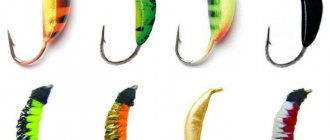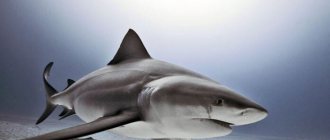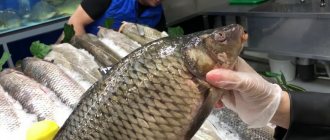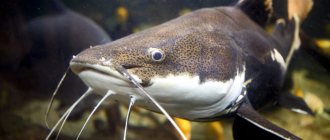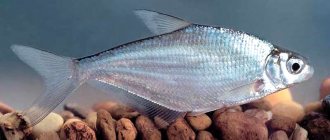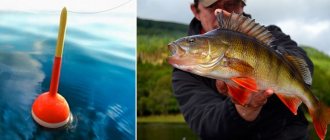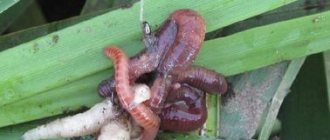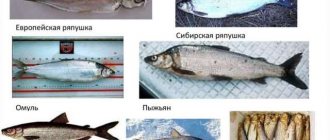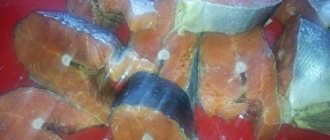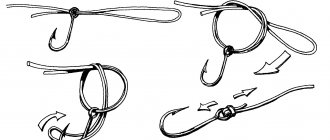Freshwater bodies
Freshwater animals
Freshwater bodies can be found throughout the world in a wide variety of climate zones.
These bodies of water are stagnant (lakes, ponds, creeks and swamps) and flowing (rivers and streams). From the smallest mud puddles to the largest lakes, from the tiniest streams to the largest rivers. All this is fresh water, which is a very mobile system, sensitive to pollution and constantly subject to various changes: lakes can become overgrown and turn into swamps, rivers can change their course. However, it is here that many species of plants and animals find shelter that have adapted to life in or near fresh water.
If a trip to the seashore for most of us is something like a trip to the “end of the world,” then you can stumble upon a typical fresh body of water even within the city.
Shrew
The water shrew lives in the reservoirs of northern Europe and Asia. Its paws have long toes framed with bristles, and the fur is so thick that water rolls off it when the shrew gets out onto land. This excellent swimmer is nocturnal. It feeds on small aquatic animals, but sometimes it bravely attacks prey much larger than itself.
Chinese alligator
The weight of pike can reach 16 kg. This predator waits for its prey, frozen motionless in the thickets of plants near the shore of a river or lake. As soon as a careless fish or insect trustingly approaches it, it rushes with lightning speed and grabs the prey. In the ecosystems of small bodies of water, pike plays an important role, ensuring that the numbers of individual fish species do not increase too quickly.
Silver spider
The silverback spider, the only one of all spiders, spends most of its life under water, without even emerging to breathe air. It weaves a silky net, attaches it to plants growing at the bottom of shallow lakes or ponds, and fills it with air bubbles, which are delivered from the surface of the water on the hairs covering its body. When the web bell is ready, the spider settles in it and from here hunts for insects passing by.
Jacans
Source
Pike
Pike and its prey (the fish it feeds on) are fresh water animals. This is a typical predator, widespread in our country. Like other organisms, pike feed differently at different stages of their development. Their fry, having just hatched from the eggs, live directly in shallow water, in shallow bays. It is these waters that are rich in their ecosystem.
Here, pike fry begin to feed heavily on the same crustaceans and protozoan microorganisms that we talked about above. After just two weeks, the fry switch to insect larvae, leeches and worms. The plants and animals of the water bodies of our country are different in different regions. We say this to the fact that not so long ago ichthyologists discovered an interesting feature: squinting squirrels living in central Russia already from the age of two months give their preference to young perches and roaches.
From this time on, the diet of young pike begins to expand noticeably. She happily eats tadpoles, frogs, large fish (sometimes twice her size!) and even small birds. Sometimes pikes engage in cannibalism: they eat their fellows. It is worth noting that fish and zooplankton are not the only animals living in bodies of water. Let's take a look at their other inhabitants.
Reptiles and insects
Smooth beetle
Mosquito
Caddisfly
Amphibians
Crayfish
Triton
Frog
Toad
Common pond snail
Leech
Large freshwater mammals
Freshwater is a fragile but life-rich ecosystem. Compared to the amount of salt water on the planet, there is much less fresh water. Fresh water is vital for humans, so historically people tried to settle closer to lakes and rivers in order to freely use water. Not only fish live in fresh waters, but also a large number of mammals that breathe air, but cannot live without an aquatic environment. Learn about the largest and most interesting inhabitants of lakes and rivers from around the world.
Fish
There are about 400 species of fish in the country's fresh waters; taking into account marine fish living in the coastal zone there are about 3000 species.
Three-spined stickleback
The threespined stickleback is a fish species that is native to most inland and coastal waters north of 30°N latitude. Most populations are anadromous (they live in seawater but breed in fresh or saltwater) and are highly adaptable to changes in water salinity.
Brown trout
Brown trout begin their life cycle feeding on small invertebrates, but later some individuals may switch to fish. The large predatory fish are sometimes called spiny trout, and were even once thought to be different species. Sea trout and river trout are also the same species, but the marine population spends most of its life at sea and migrates to rivers to spawn.
Red salmon
Sockeye salmon live in the North Pacific Ocean but breed in fresh water. They return to the freshwater systems where they were born between June and July. During spawning, each female lays about 2,000 eggs, and soon after spawning, both males and females die. The newly born generation remains in its native body of water for up to 2 years, and then goes to the ocean. There are also populations of sockeye salmon that always live in fresh waters, although they have access to deep water.
1) Hippopotamus
These large mammals cool off by immersing their massive bodies in cool African ponds, rivers and lakes for long periods of time - up to 16 hours daily. Although they can hold their breath for half an hour if necessary, hippos usually stick their head out of the water. At night, hippos stop taking baths and go to browse the grass. If animals remain in the sun for a long time, they will quickly become dehydrated.
The hippopotamus, or hippopotamus as it is also called, has sharp fangs that can reach up to half a meter in length. They show their fangs to each other to determine which animal is dominant. Sometimes displaying powerful teeth is not enough, so animals get into bloody fights. Hippos are quite dangerous to humans.
2) Manatee
Manatees live in shallow, warm river waters and can also live in salt water. These large mammals reach a weight of 600 kilograms. They are born underwater and never leave their home waters until death, but they are forced to swim to the surface of the water every few minutes to breathe air. Known as sea cows, manatees are herbivores that feed on a variety of marine plants, including algae and others. Several species of manatees live along the Atlantic coast of America, in western Africa and in the Amazon River.
Freshwater fauna
Freshwater fauna is a collection of animals living in fresh waters, a very vague concept, since, on the one hand, between sea and fresh water there are all kinds of transitions that take place in bays (see marine fauna), river mouths, estuaries and lakes with communication with the sea, and on the other hand, very many marine animals rise upstream of rivers either as permanent migrants or as temporary guests. Fresh water can contain a wide variety of quantities of different salts, forming all the transitions from water almost devoid of salts, then harmful for drinking, to so-called mineral waters. The fauna of different reservoirs is very different in composition due to the properties of the reservoirs, and the establishment of these dependencies is a very interesting task of modern hydrobiology. The freshwater fauna is much poorer in composition than the marine fauna, since it lacks entire groups, and others are represented by single species instead of many hundreds of marine ones (see marine fauna). Among mammals, only cetaceans and sirenids are true animals that do not go onto land. Of these, some dolphins (family Platanistidae) are specifically river animals, found in the Amazon, Laplata, Indus and Ganges, and sea dolphins sometimes go far into rivers (in some cases they travel along the Seine to Paris and along the Rhine to Cologne). Representatives of the lilac order, manatees, live in South America in the Orinoco and Amazon rivers, in Africa in the Senegal River, Niger and even in Lake Chad. All other freshwater mammals live half on land and half in water. From the marine group of pinnipeds in our fauna, we must include the circumpolar ringed seal (Phoca foetida) in lakes Ladoga, Onega and Saimaa, an obvious immigrant from the Baltic Sea, and the more mysterious Baikal seal or seal (Ph. sibirica). Among the insectivorous aquatic mammals that have nothing to do with marine fauna are the Russian and Spanish muskrats, the North American Scalops and the African Potamogale; Among the predators characteristic of our fauna are the otter and the mink; among rodents, the European and North American beavers, our water rat (Microtus amphibius), the South American swamp beaver, or coipu and capybara; from ungulates, hippopotamus, or hippopotamus (Africa); from the subclass of monotremes (Monotremata) the Australian platypus. A large group of waterfowl is closely associated with fresh waters, and many species are also associated with sea waters. Waders are partly associated with rivers, lakes and swamps rich in water, and partly with swamps where waterfowl do not stay. Of the reptiles, all crocodiles belong to the freshwater fauna. Of the snakes, freshwater animals are the European water snake and several species of tropical snakes. Of the turtles, many live in fresh waters, especially in North America and tropical countries on all continents. There are only three turtles in the Russian fauna - the common European, Caspian and East Siberian (Trionyx sinensis). Of the amphibians, the permanent inhabitants of fresh waters are all those that have gills throughout their lives, for example, cave proteus, North American Siren and sexually mature axolotes in the larval state. The remaining amphibians live in fresh water in the larval stage. Freshwater fish make up a very significant part of the freshwater fauna. An entire subclass of double-breathers and a significant part of ganoids are exclusively freshwater. Within Russia (according to Berg) there are 281 species and 92 subspecies of freshwater fish, but this number also includes the so-called migratory fish, which live partly in the sea. There are 590 species of freshwater fish in North America and 1,425 in Africa. When entering different bodies of water, representatives of the same species undergo changes that give grounds to distinguish them as special forms called “morphs.” Thus, ordinary migratory salmon (Salmo salar L.), entering Lake Ladoga during spawning, then returns back, but there are modified salmon in the lake, “lake” salmon (morpha relictus) never leave it. Similar mischievous morphs, very similar to those from Ladoga, were developed from the same anadromous salmon in the Swedish Lake Wener and in the lakes of North America. Another species of salmon, taimen (Salmo trutta), has become lake trout in lakes and brook trout in rivers and streams. There are many such examples, very important for the theory of evolution, among freshwater fish. Mollusks of the freshwater fauna are very few in number compared to marine ones. The groups to which they belong are the following: from the class Gastropods - the order Pulmonata, which includes the most common genera pond snail and catfish, and the order Crestobranchia, which includes all other freshwater gastropods; from the class of elasmobranchs - a representative of the order Dreissena, a mollusk of marine origin, widely distributed along rivers (for example, along the Volga), and representatives of the order of true elasmobranchs: toothless, pearled mussels, etc. Crustaceans, especially the lower ones, are numerous in the freshwater fauna and are interesting in that regard that many of their species are definitely associated with the known properties of reservoirs. Of the higher crustaceans, a prominent place is occupied by: in Eurasia and the western part of North America, the genus Astacus, which includes several species of common crayfish; in the rest of North America the genus Cambarus is very similar in general appearance to our crayfish, and in Tasmania there is a special genus of crayfish, reaching a weight of 9 pounds. In the fresh waters of the tropical zone, representatives of the marine genus Palaemon (shrimp) are found, and in Europe and North America, a special freshwater genus Palaemonotes, closely related to this genus, is also found in brackish waters. Among the crabs, a marine group, there is a specially freshwater family Telphusidae, widespread in southern and eastern Asia, Africa and Australia, and in Europe on the southern peninsulas, in the Crimea and in the Caucasus in mountain streams. From the purely marine group of fissures, several species of mysids (Mysidae), obvious migrants from the seas, live in lakes and rivers (there are 9 species in the Volga). The order of isopods is very poorly represented by the typically freshwater genus Asellus, which includes the well-known “water donkey,” and the marine species Idothea entomon (“sea cockroach”) of Ladoga and Swedish lakes. The order of amphipods (Amphipoda) is represented everywhere by the common amphipod or jig (Gammarus pulex) and its subspecies and several river natives from the seas, and only in one place on the entire globe, in Lake Baikal, does it display an absolutely exceptional wealth of forms (more than 300 species), nowhere except not found. Among them there are both coastal and deep-water species, and then one pelagic. The copepod order, which includes the well-known “Cyclops”, which has many representatives in the sea, is richly represented in the freshwater fauna in a wide variety of bodies of water, from puddles to large lakes. The same must be said about cladocerans (Cladocera), which includes the well-known daphnia, which populate various bodies of water in large numbers. Some peculiar genera of this group are characteristic of clear lake water (Leptodora and Bythotrephes). A purely freshwater group are branchiopods, representatives of which are the inhabitant of vernal pools, the branchiopod (Branchipus) and the original “shieldfish” (Apus), which lives not only in vernal pools, but also under other conditions. Of the order of barnacles (Ostracoda), the majority lives in fresh water, and of the marine order of barnacles (Cirripedia), the so-called “sea acorns”, Balanidae, are found in Lake Paleostom near Poti, as well as in the mouths of the Dnieper, Danube and Don. There are known cases of balanuses attaching to the shell of crayfish. From the order of mites of the arachnid class, a whole large family of water mites (Hydrachnidae) lives exclusively in fresh water (air breathing), and from the order of spiders, the only species “water spider” (Argyroneta aquatica) lives under water in bells built from webs and filled with air. Insects are found in the sea only as very rare exceptions, but are richly represented in the freshwater fauna. Water beetles, a family of swimming beetles and water lovers, as well as water bugs live constantly in the water. Some insects live in water only in the larval stage, and before metamorphosis they leave the water (for example, dragonflies), while others go through the pupal stage in water (for example, mosquitoes, caddis flies). Some insect larvae living in water breathe external air through spiracles (larvae of beetles, flies, mosquitoes), for which they must either swim to the surface to breathe (larvae of beetles), or remain almost constantly on the surface (larvae of mosquitoes), or must live at the bottom small bodies of water, extending thin tail-like outgrowths with a spiracle at the end to the surface of the water (“rats”, larvae of the Eristalis fly). Another part of aquatic insect larvae has special organs of water respiration, tracheal gills, lateral skin outgrowths in which respiratory tubes without spiracles branch (larvae of stoneflies, mayflies), and in some dragonfly larvae the tracheal gills are placed in the hindgut and washed with water taken in through the anus current of water. Among the interesting biological features of aquatic insect larvae, we must mention the construction of houses by caddisflies.
Bryozoans are represented in the freshwater fauna by a few purely freshwater genera. Of the annelids, there are several genera of leeches that are characteristic only of the freshwater fauna, and of the oligochaetes (see XXIV, 561), most of the aquatic ones belong to the freshwater fauna; polychaetes are a rare occurrence in the freshwater fauna, either as true marine species that entered the mouths of rivers, or as specially freshwater forms: one genus in the rivers near Tonkin, another in the river near Philadelphia and in large numbers in Baikal. Few species of the nemertean class sometimes enter river mouths; in the Volga one species is known both at the mouth and in Saratov. There are also mysterious cases of nemerteans being found in pools with aquatic plants in botanical gardens, as well as in aquariums (including in Moscow). Rotifers are numerous in fresh waters and certain genera and species are characteristic of certain types of water bodies, being the guiding forms in the classification of water bodies. They constitute a significant part of freshwater plankton. Roundworms have numerous free-living representatives in the freshwater fauna. These are small creatures of the same type, poor in external characteristics, inhabitants of the bottom. Parasitic roundworms are common in aquatic vertebrates, rare in invertebrates.
This unique free-living hairworm is found only in freshwater fauna. Fluke worms live freely in fresh water only during certain periods of their development (see worms, XV, 153/154), and then, together with tapeworms, are known as numerous parasites of aquatic vertebrates. Ciliated worms are represented in the freshwater fauna by many species. The numerous endemic species of Baikal planarians are remarkable for their originality. Of the hydroid polyps, the exclusively freshwater genus is Hydra. Another polyp, Cordyllophora lacustris, is found mainly in brackish waters, which clearly indicates a marine origin, and in some rivers and lakes. Another freshwater polyp, Polypodium hydriforme, known only from the Volga both as a parasite of sterlet eggs and in a free-living state, according to the latest data, should be classified as scyphopolyps. Of the hydroid jellyfish, Limnocnida is found in the large lakes of Africa (Tanganyika, Victoria Nyanza, Chad) and in the Niger River; Limnocodium, previously found only in greenhouse pools, was found in Yangtze-jiang, 1000 nautical miles from the mouth (the origin is mysterious) . Jellyfish are also known in the rivers of the island of Trinidad, and recently freshwater jellyfish and their polyps (Mycrohydra) have been found in several places in Germany. Sponges of the freshwater fauna are represented by a few genera, of which sponges (Spongilla) are common. Protozoa are richly represented in the freshwater fauna by ciliates, flagellates, sunfish (most are freshwater), amoebae and single-chambered rhizomes, which are very abundant at the bottom of various reservoirs.
Invertebrates of freshwater fauna are important as food material for fish. At first, they paid more attention to plankton, but then it turned out that for many fish, the inhabitants of the bottom (mollusks, Chironomus mosquito larvae, the so-called bloodworms) are of primary importance. This gives work on the study of freshwater bodies not only great scientific, but also great practical interest. Our underdeveloped lake and pond fisheries, which are thriving abroad, especially in Germany, are based on the study of freshwater fauna, which determines the feeding qualities of reservoirs. Scientific interests related to freshwater fauna are very large. Zoogeographers are interested in the question of the cosmopolitanism of this fauna, the reason for which is the ability of many aquatic organisms, when water bodies dry out, to enclose themselves in protective shells (cysts) or simply shrink, as tardigrades (Tardigrada) do, and then they fall into the power of the wind or other methods of passive transfer. Methods of passive dispersal include the transfer of aquatic organisms by the legs of waterfowl and wading birds. Even fish roe can be transported this way. Transported gradually from place to place in a state of hidden life, freshwater organisms spread widely in all directions, which is the reason for the cosmopolitanism of many of them. But along with this, natural selection operates powerfully, expressed in the fact that many freshwater organisms are extremely sensitive to the properties of the environment in which they live. A planktonic organism in a large lake cannot live in a swamp or puddle and, conversely, the branchiopod, the crustacean of vernal pools, is never found in lakes, since for its development it is necessary that the eggs laid on the bottom of a temporary reservoir first dry out and then freeze. The fauna of streams differs from the fauna of rivers, and the fauna of rivers from the fauna of oxbow lakes. Hydrobiologists make a lot of effort to determine the features that characterize a reservoir. Its size, depth, bottom properties, vegetation, water temperature, oxygen and salt content in it and, finally, the concentration of free hydrogen ions are taken into account. Sometimes bodies of water that are very similar to each other in other characteristics turn out to be different precisely in the last of the listed characteristics, and this is reflected in the microfauna. A certain composition of fauna is sometimes so connected with the properties of water that when determining its suitability or unsuitability as drinking water, among other things, biological analysis is used, in which some guiding forms serve as indicators of the purity of the water, and others of its contamination. In freshwater bodies of water, by the way, a phenomenon unknown in the sea is observed - such a drop in the oxygen content in the water under the ice that animals suffocate en masse (the “death” of fish and some more sensitive planktonic animals).
Lakes that are more than 100 meters deep have a deep region in which, starting from 100 m, a constant temperature of 4°C prevails all year round and there is almost no lighting. Here a deep fauna is created, consisting mainly of the same species that live at shallow depths, and here they adapt to a depth of several hundred meters. In Baikal, where depths of up to 1,522 m are known, a wonderful fish, the golomyanka (see), lives in the deep region, in its characteristics reminiscent of deep sea fish. The deep African Lake Tanganiyka (up to 1,430 m) contains endemic genera of marine-type mollusks, some of which are similar to fossil tertiary forms. A unique freshwater fauna lives in cave ponds. The pigmentless and blind “Proteus” from the caves of Carniola and Istria is widely known. In North America, Missouri caves have their own tailed amphibians. There are also blind fish in caves in North America. There are many cave crustaceans known in different countries. Another type of underground fauna is the well fauna. It is especially remarkable in cases where the wells are deep and have no connection with rivers or lakes, such as some artesian wells. The origin of this fauna is not clear. In shallow wells and near reservoirs there is an uncharacteristic fauna of an obviously alien nature. In some cases, it is possible to trace the history of reservoirs, the gradual transition from one type of reservoir to another and, in connection with this, gradual changes in the fauna. Thus, a small river forming ponds can gradually turn into a series of standing reservoirs (former river basins) after the parts of the channel connecting them dry out. Through gradual overgrowing, a lake can turn into a swamp, etc. Studying the fossil fauna of peat bogs can provide indications of the history of the former reservoir. From a zoogeographical point of view, numerous facts of marine animals entering far upstream rivers are interesting. Caspian settlers are observed not only in the Volga, but also in the Oka, few even up to the confluence of the Moscow River. Sea migrants were also found in the Don. These migrations of recent times bring us to the major question of the origin of all freshwater fauna through the gradual transition of various representatives of marine fauna to fresh waters with corresponding changes under the influence of another environment.
Freshwater fauna provides material for a number of interesting biological studies. Thus, in some rotifers and daphnia, “cyclomorphosis” is observed, i.e., a sequential change of parthenogenetic and fertilizing generations, as well as seasonal variability, in which generations that arose at different times of the year differ from each other in certain characteristics. This variability of characters is associated with changes in the properties of the environment, but the latest research has shown, however, that seasonal variability is not a simple consequence of the influence of external conditions, but that it largely depends on the hereditary predisposition to certain changes, so that in some cases It is impossible, through external influences, to overcome the direction of variability that is predetermined by heredity. All these complex interactions of various biological laws, clearly manifested in representatives of freshwater fauna and the availability of objects, make the study of freshwater fauna very tempting, and it attracts numerous researchers who have created a very extensive literature. The importance of studying freshwater fauna for fisheries has created, along with theoretical and rich applied literature on fish science and fish farming, branches of knowledge that are entirely based on biology. Freshwater fauna is of great pedagogical importance in both higher and secondary schools, since, due to its composition and the environment in which it lives, it is much easier to study methodically than terrestrial fauna.
Literature. Bening, A.L., “Towards the study of the bottom life of the Volga River”, Saratov, 1921; Vereshchagin, G. Yu., “Observations of reservoirs in the river valleys of the southeast of European Russia” (1915, Yearbook of the Zoological Museum of the Academy of Sciences, vol. XX); Voronkov, N.V., “Fresh water plankton” (M., 1918); Henschel, “The Life of Fresh Waters,” 1914; Zhadan. V.I., “Our freshwater mollusks” (Murom, 1920); Zograf, N., “Experience in explaining the origin of the fauna of lakes of European Russia” (Izvestia of the Academy of Sciences, vol. III, 1895); Lampert, K., “The Life of Fresh Waters” (Petersburg, 1900). The second German edition (Lampert, Das Lebcn der Binnongewässer) was published in 1910. Numerous materials on Russian freshwater fauna are included in the works of freshwater biological stations; Hydrobiological on Glubokoe Lake (the first in time of its foundation), Borodinskaya of the St. Petersburg Society of Natural History, Volzhskaya in Saratov, Kosinskaya near Moscow and Okskaya in Murom. Brauer, A., "Die Süsswasserfauna Deutschlands" (large series of individual issues, started 1909); Knauthe, K., "Das Süsswasser" (Neudamm, 1907); Lauterborn, R. S., "Süsswasserfauna" (pp. 861-920 "Handwöterbuch der Naturwissenschaften" (Jena, 1913); Halbflass. W. "Grundzüge einer vergleichenden Seenkunde" (Berlin, 1923).
G. Kozhevnikov.
4) Baikal seal
There are many seals in the world, but only one species is truly freshwater - the Baikal seal. The animals live on Lake Baikal, Russia, the deepest lake in the world. Although new generations of Baikal seals are born every year on the shores of the lake, these animals are in serious danger of extinction. One of the reasons is illegal hunting, as well as environmental pollution from paper and pulp mills and other industrial facilities located around the lake.
Reptiles
Up to 70 species of various reptiles live in the vastness of Russia.
Common viper
Common viper
This poisonous snake lives over a vast territory - starting from the cold shores of England, moving to the expanses of France, and from there to the very Pacific coast of Russia. Although the snake looks angry and aggressive, it is actually very shy and timid. The snake has a distinct zigzag black pattern that runs throughout its body. It grows to an average length of 60 centimeters and weighs an average of 120 grams.
The diet consists of small mammals, lizards, birds, spiders and worms. The common viper is found in meadows, forests, swamps, sandy semi-deserts and on the shores of lakes. Despite the constant destruction of natural habitats, the snake continues to find new places where it develops and maintains its population.
Caucasian agama
Caucasian Agama
The Caucasian Agama (Paralaudakia caucasia) is a species of lizard native to Turkey, Russia, Iraq, Iran, Afghanistan and Pakistan. It grows to an average length of 15 centimeters and weighs about 90 grams. Inhabits mainly deserts, shrubs and mountain meadows. It feeds on insects, small vertebrates, berries and flower buds. There is little information about the lizard population and therefore further research is needed to more accurately analyze this remarkable species.
5) Amazonian dolphin
The charismatic Amazon dolphin uses echolocation to track fish and crustaceans in the murky waters of the Amazon River. During the annual floods, dolphins swim in flooded forests, hunting for prey between the trees. Dolphins are fairly easy to spot due to their pink or very pale colors. The color of dolphins and their natural curiosity make them easy prey for hunters who illegally capture these animals. In recent years, the population has declined significantly. The indigenous people of the Amazon, the Bouto people, have long believed that animals have superpowers and can transform into humans.
6) Capybara
The world's largest rodent, the capybara or capybara, can grow up to 130 centimeters in length and weigh about 66 kilograms. These water-loving mammals reach this weight by feeding on grass and aquatic plants.
Physically, capybaras are very well adapted to life in an aquatic environment. They have webs between their toes that help them swim well. Animals can dive and stay underwater for 5 minutes or more. Capybaras are found in Central and South America in lakes, rivers and humid areas from Panama to Brazil and northern Argentina.
The Conservation Committee works with partners to preserve the natural habitat for capybaras, including the wet grasslands of Llanos. The group is working with local landowners to establish private reserves in critical habitat as well as public protected areas in the province of Nasanare in northeastern Colombia.
Capybaras' eyes, ears and nostrils are located at the top of their heads, so they remain on the surface when the animals swim. These social mammals travel and live in groups where a large male dominates. Together they protect their territories where they live and feed. People hunt and farm capybaras for their meat and skins. Some Catholics in South America equate capybaras with fish, so they allow the meat of these animals to be eaten during Lent.
Mammals
Where would we be without them? Representatives of this class of animals have covered the entire globe, spreading everywhere they can: in the air (bats), in water (whales, dolphins), on land (tigers, elephants, giraffes, dogs, cats), underground (shrews) , moles). Despite this, there are not so many mammals associated with fresh and stagnant waters in our country.
Some of them spend almost their entire lives in bodies of water, without leaving a single step from them (muskrat, weasel, otter, muskrat, beaver), while others prefer to stay not in the water, but next to it (water voles). Such animals have well-developed swimming membranes between the toes, and special valves are located in the ears and nostrils that plug these vital openings when the animal is immersed in water.
7) Beaver
Beavers are excellent engineers, second only to humans in matters of restructuring the landscape in their favor. Using powerful jaws and teeth, they cut down trees to produce wood and mud dams that are 1 to 3 meters high and over 30 meters long. Beaver dams block the path of rivers and streams and prevent them from flooding fields and forests. As a result, lakes are formed, which can be quite large. On lakes, beavers build huts from branches and mud, which they enter through underwater tunnels. Huts are needed to hide from enemies and store food supplies.
Although beavers are quite clumsy on land, they are excellent swimmers thanks to their webbed feet and long, flat tail-rudder, which allows them to reach speeds underwater of up to 8 kilometers per hour. The animals boast their natural swimming suit made of oily, water-repellent fur.
Beavers feed on aquatic plants, roots, leaves, bark and branches. Beavers have teeth that grow throughout their lives, so when they chew wood, this prevents their teeth from growing too long and curved. One beaver can fell hundreds of trees a year. In 15 minutes, a beaver can knock down a tree with a diameter of 15 centimeters.
9) Platypus
The platypus is an incredible mixture: it has a furry body like an otter, a beak like a duck, webbed feet and a flat tail like a beaver. Like all these animals, the platypus is a strong swimmer and spends most of its life in the water. Unlike otters and beavers, platypuses lay eggs—only a couple of mammals on the planet do so. Male platypuses have poisonous stings on their hind legs. The animals dig holes near the shore and feed on dug worms, mollusks and insects.
Source
Arachnids
About 10 thousand species of arachnids are found in Russia.
Crab spiders
Crab spiders do not spin webs to catch their prey. Instead, they rely on camouflage and set up an ambush. These colorful spiders blend into the surrounding vegetation, where they lie in wait for unsuspecting victims. Some species can even change color, masquerading as a leaf or flower.
Scorpios
Scorpions were among the first animals to adapt to life on land, 420 million years ago. They are the oldest arachnids found in fossils. Scorpions are especially recognizable by their large, powerful claws, which are necessary for capturing prey. The famous stinging tail contains a pair of venom glands and is used to paralyze its prey. About 2,000 species have been described, living on all continents except Antarctica.
Orb-weaving spiders
Orb weavers weave classic round webs often found in gardens, fields and forests. Their wheel-shaped networks are made up of concentric circles with spokes radiating out from the center and can be about a meter wide. A beautiful large colored abdomen and a small head are observed in females of most species. Males tend to be smaller, do not spin webs, and spend most of their time wandering in search of a mate.
Jumping spiders
There are about 5,000 species in the jumping spider family, they are widespread throughout the planet and have even been found on Everest. They are active hunters with excellent eyesight and do not catch their prey using webs.
Hunter edged
These spiders use the surface of the water in a way that other spiders use their webs. Ripples from insects on the surface of the water are caught by the numerous hairs on the spider's legs. Short, velvety, water-repellent hairs covering the body and legs help walk on water. Spiders quickly glide across the surface of a pond and attack their prey.
